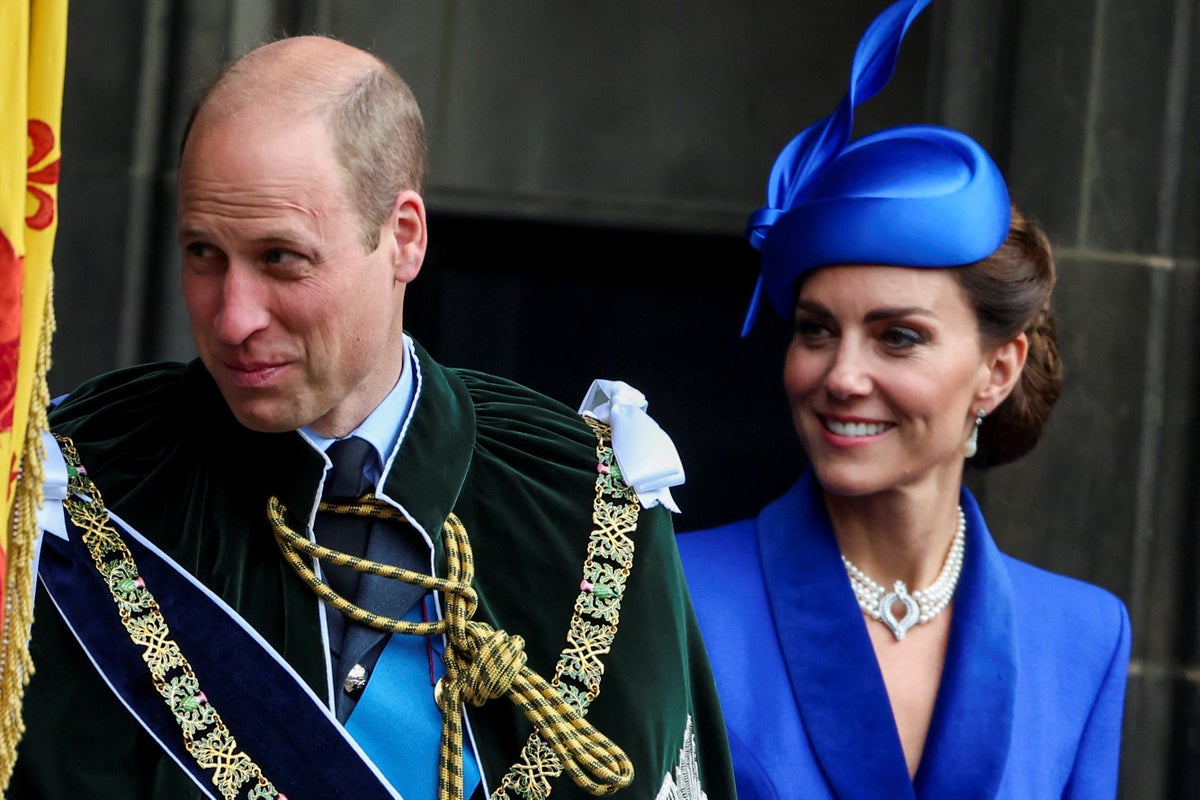
The Prince and Princess of Wales have spent the period since Queen Elizabeth II’s death developing their relationship with the people of Wales.
William and Kate were named as the new Prince and Princess of Wales by the King in his historic address to the nation the day after his mother died peacefully at Balmoral.
The couple were focused on “deepening the trust and respect of the people of Wales over time”, a source close to the couple said at the time.
Wales is the place where they are expected to mark the first anniversary of the Queen’s death by visiting St Davids Cathedral on Friday, according to reports, with the prince likely to pay tribute to his grandmother.
Charles was the longest-serving Prince of Wales, holding the title since he was a young boy and formally invested as the Prince of Wales when aged 20, at a ceremony staged at Caernarfon Castle in 1969.
Protests were staged against the historic moment, including a bomb plot co-ordinated by Welsh paramilitary group Mudiad Amddiffyn Cymru.
The use of the title Prince of Wales has again generated controversy with a petition calling for its end “out of respect” for the Welsh, gathering more than 25,000 signatures soon after the Queen’s death.
There are no plans for an investiture ceremony to formally install William as Prince of Wales.
During a TV discussion, Lord Dafydd Elis-Thomas said when he was culture minister in the Welsh Government he raised with Charles, then Prince of Wales, the hope there would never be another investiture in Caernarfon Castle.
Lord Dafydd Elis-Thomas said Charles laughed and said: “Do you think I want to put William through what I went through?”
William and Kate made their first visit to Wales as the nation’s new prince and princess just a few weeks after the Queen’s death, travelling to Anglesey, their first home when newly-weds, and where they raised their eldest son Prince George for the first few months of his life.
The title has come with new responsibilities for William as he is now heir to the throne and will increasingly represent his father the King at events at home and overseas.
The prince had been preparing for his role since he left his job as an air ambulance pilot in East Anglia and began working as a full-time royal in 2017 in support of his grandmother.
Three years before, he enrolled on a 10-week course in agricultural management at Cambridge University, learning about the issues facing rural communities and the farming industry.
His studies gave him a grounding for running the Duchy of Cornwall, a portfolio of land, property and investments valued at more than £1 billion, which provide an income for the heir to the throne.
William, who is also the Duke of Cornwall, a title inherited from his father after the Queen’s death, made his first visit to Cornwall in November last year, meeting staff, volunteers and young people involved in a community environmental project, and returned in July to open a new restaurant and atrium at the Duchy of Cornwall’s nursery.
The prince’s public work has seen him launch a number of major projects in recent years from the Heads Together mental health campaign, with Kate and the Duke of Sussex, to his Earthshot Prize environmental awards and a new homeless initiative that aims to end rough sleeping.
In a recent newspaper interview, William was asked if there were plans for affordable housing on his Duchy of Cornwall land and replied “There is. Absolutely. Social housing. You’ll see that when it’s ready.”
Kate, meanwhile, has focused on the early years development of children and earlier this year launched her “life’s work”, an ambitious campaign aimed at raising the profile of the formative years of a child’s life.
In the coming years the couple’s prominence in public life will grow as William waits to fulfil his destiny and one day become King







